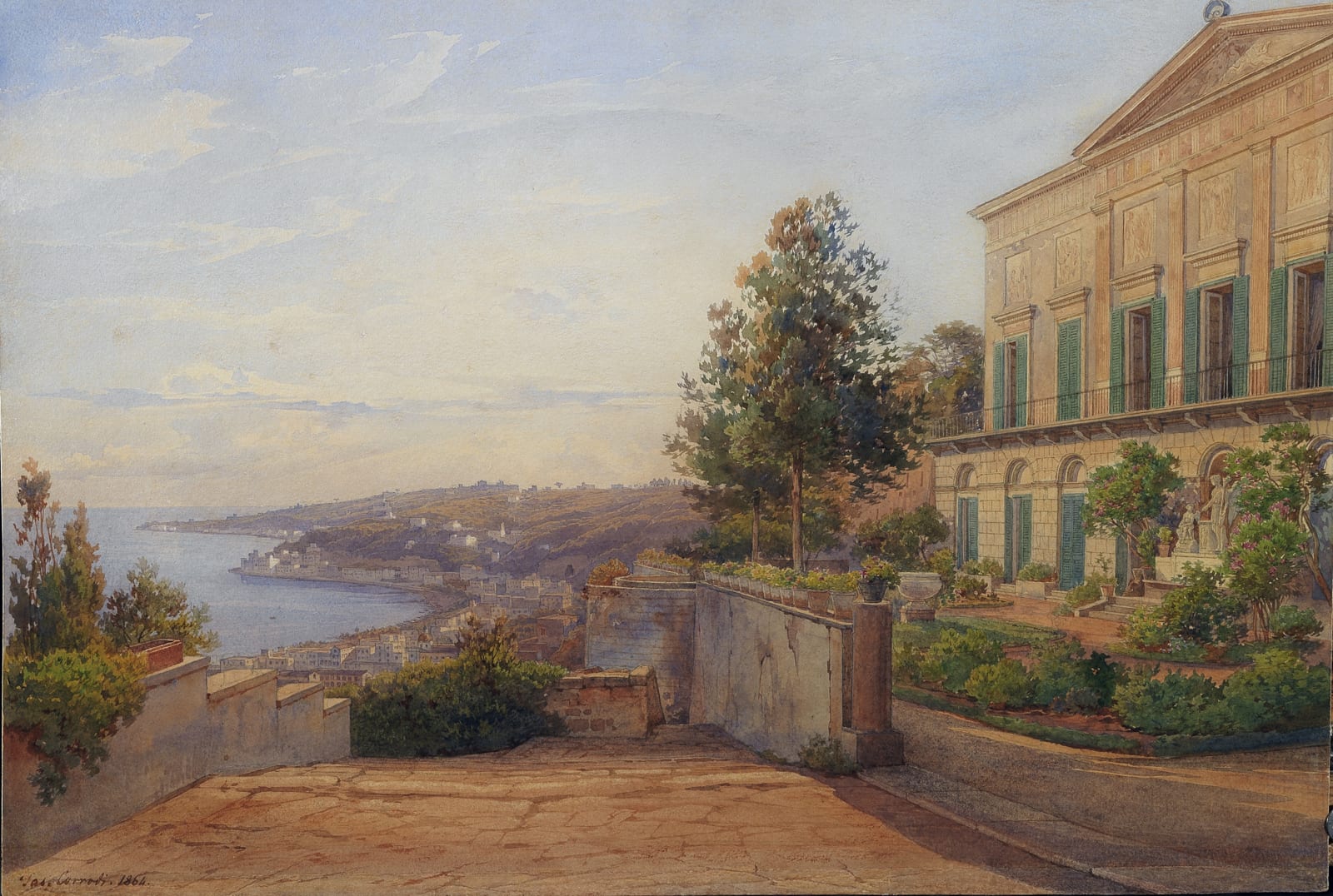Salomon CORRODI
These unpublished watercolours, made by Salomon Corrodi, depicts Villa Lucia in Neaples. A place of prayer for the Benedictine Fathers at the end of the Sixteenth Century; the property was purchased in 1807 by Giuseppe Saliceti, Minister of Gioacchino Murat, and was already an elegant temple-shaped Coffee House designed by Francesco Maresca in 1809, when it was acquired by King Ferdinando I in 1816, to become part of the Park of the Floridiana.
The Casetta delle delizie (The little house of delights) became a dance hall for the continuous parties and soirees in the royal residence, and was linked with the rest of the park by a bridge 16 meters high (necessary to overcome the steep decline). Its present name derives from that of the favourite of the King, Lucia Migliaccio, Duchess of Floridia, to whom the entire complex of Floridiana was bestowed.
In the early twentieth century the villa, was bought by the industrialist and art collector Garofalo, and frequented by many artists and architects, including Vincenzo Gemito, Guido Casciaro, Edoardo Giordano, Luigi De Angelis, Rubens Capaldo, Luigi Cosenza. It became a meeting place for intellectuals, who, during the Fascist period, gathered mainly around the studio of the communist painter Paolo Ricci, thus creating a group to oppose the regime. The cultural debate in the villa followed closely all the latest phenomena, from Avant-Garde Art to Existentialism, to Hermetism, psychoanalysis, German, Soviet and American cinema and theater.
Salomon Corrodi, born in Switzerland, received his first lessons from his godfather von Schwerzenbach, later attending the creative circles in Zurich, where he had gone to study.
In Rome, in 1832, he met Bertel Thorvaldsen (1770-1844) and worked in the studio of Franz Ludwig Catel (1778-1856). He made his debut in the exhibition arranged in Rome in 1840 during the visit of Tzar Nicholas of Russia, who acquired some of his work, thus establishing his reputation in Roman and International society.
At the invitation of the Grand Duke of Tuscany in 1843, he moved to Florence where he remained until 1849. After a stay in Zurich, an interest in Venetian landscape painters, led him to settle in Venice doing watercolours that meet with considerable favour in a subsequent show in Munich. Later he returned again to Rome. It can be said that Salomon Corrodi is one of the main protagonists of the Mediterranean Grand Tour that led the painters to travel tirelessly, portraying views and impressions of places visited. He went to England in 1863 and some of his paintings were bought by Queen Victoria. In Rome he took part in the exhibitions of the Society of Roman Watercolourist.
His watercolours always reveal a clever hand. His two sons Arnold (Frascati 1844-1874) and Hermann (Frascati, 1846 - Rome, 1905) followed successfully in the footsteps their father. His paintings are at the Accademia Nazionale di San Luca in Rome, the Museum of Vienna and the Hermitage in St. Petersburg.
JOIN OUR MAILING LIST
Subscribe to our mailing list in order to receive news on new acquisitions, exhibitions, special previews and more!
* denotes required fields
We will process the personal data you have supplied to communicate with you in accordance with our Privacy Policy. You can unsubscribe or change your preferences at any time by clicking the link in our emails.
